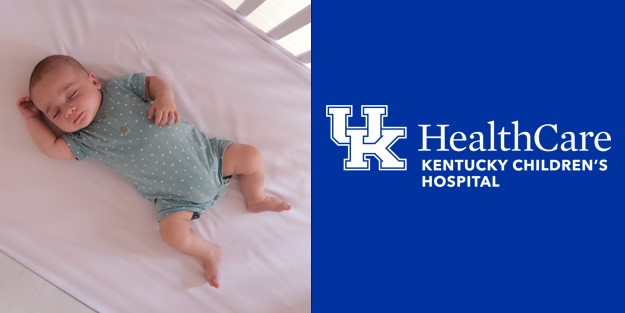UK HealthCast: Helping newborns sleep safely

UK HealthCast is a podcast series featuring interviews with UK HealthCare experts on a variety of health-related topics.
This edition features Sherri Hannan, RN, Safe Kids Fayette County Coordinator for Kentucky Children’s Hospital. Hannan provided extensive advice for parents on how to ensure their newborn baby remains safe while sleeping.
When a newborn comes home what should parents know about how the baby should be properly positioned for sleep?
You want to first make sure that you are using a safe crib, something that meets all the current safety standards and has no recalls. Then, you want to make sure that you have an empty crib with a firm mattress. That's the one place we put babies typically unsupervised when they're down for the night or for naps, so we want to make sure that is a safe crib.
Lots of times, maybe the grandparent has saved the crib of mom or dad, and wants to do that as a hand-me-down. But typically, those don't meet the same safety standards of today, so make sure that you have a safe crib, one that meets all the consumer product safety standards, one that you will use properly each and every time.
What are some do’s and don’ts inside the crib?
There should be nothing in the crib, no blankets, no pillows, stuffed toys, bumper pads, completely empty. You want to just put baby there on their back. And because we're saying no blankets, we have now what we call wearable blankets or sleep sacks, and baby can just be fitted into that when it's time for bed.
And we do know that sometimes babies, especially newborns to maybe up to four months, like to be swaddled. That's a technique where you wrap the blanket kind of tightly around the baby. That's OK if that's what your baby likes, but you want to make sure that their arms are down to their side and their hips and legs have room to move. But once baby starts to act like they're going to roll over, you want to stop swaddling baby, because they need their arms and their hands in order to actually roll and then roll back.
You mentioned the baby should be on its back. Why is that so important?
It's different from what many grandparents used to do for their children, but it's evidence-based. Baby needs to be face up. Face down, the baby can re-breathe that exhaled carbon dioxide, which might be one of those reasons that babies go into a sound sleep, and they can run the risk of a SIDS death.
To learn more about safe sleep for your baby, listen to Sherri Hannan’s UK HealthCast below:




